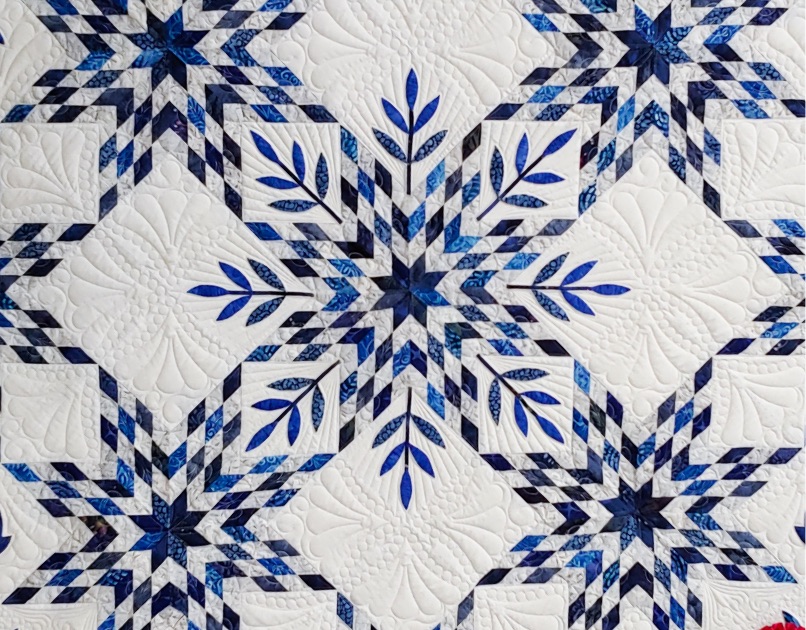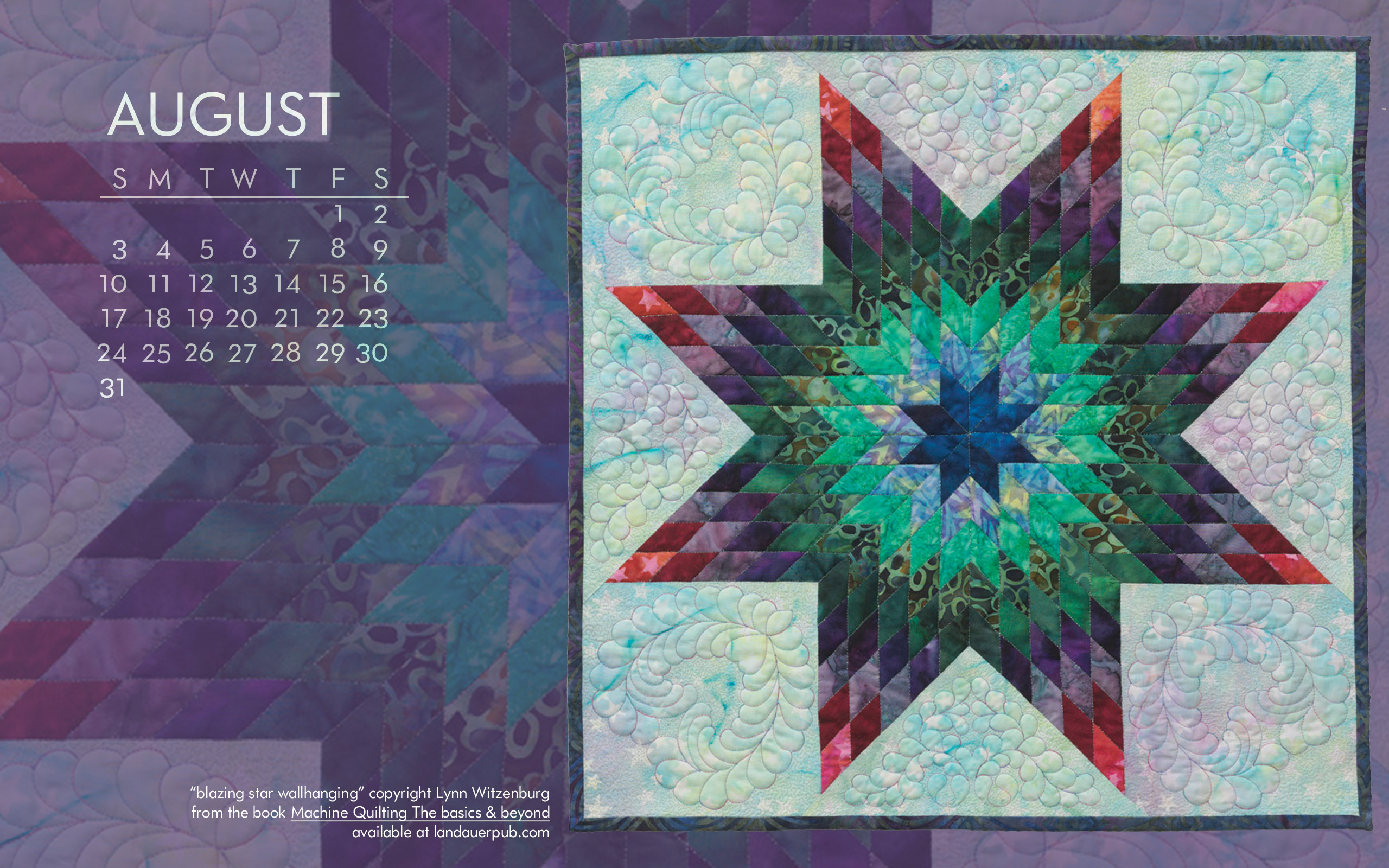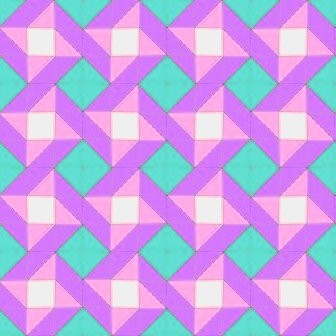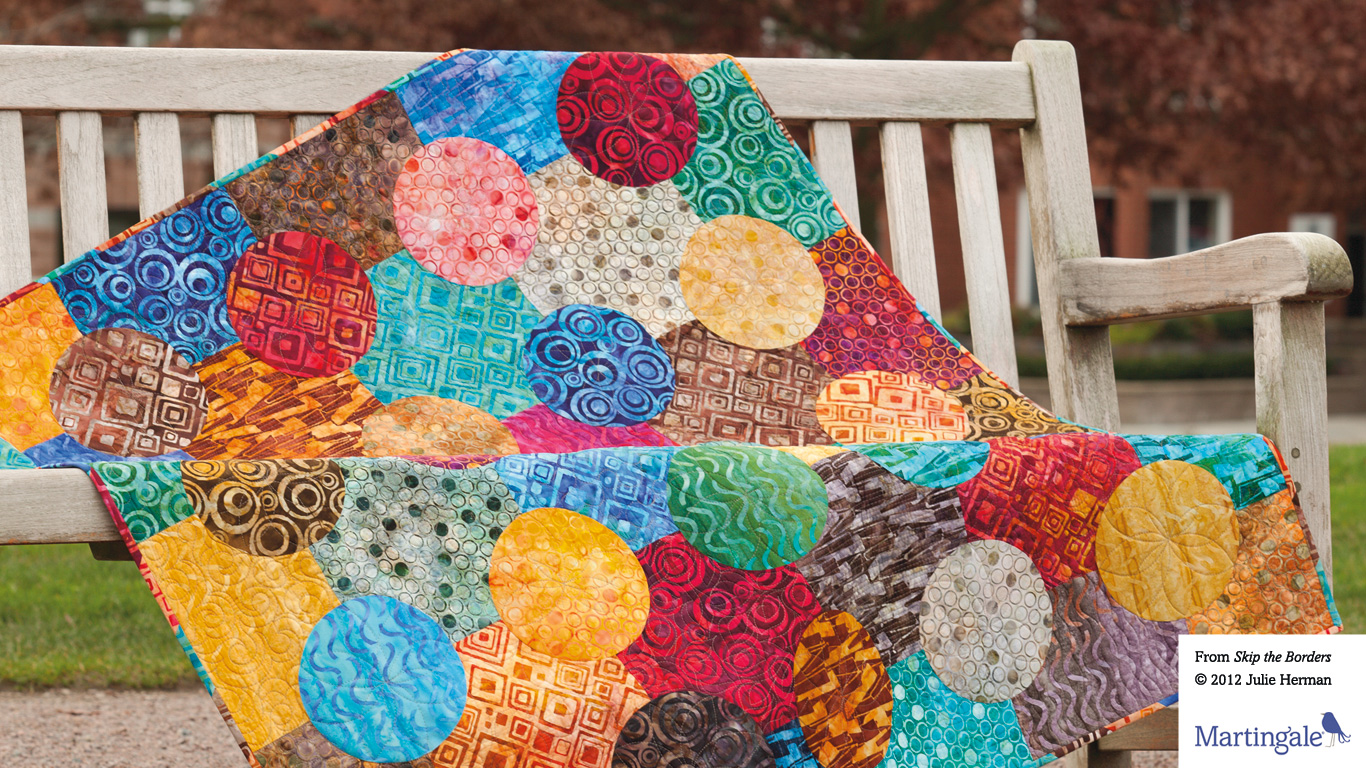

Quilt blocks are often translated to produce quilts! But since it seems more common for quilt blocks to have 4 mirrors (rather than 2), its still not surprising that 2*22 is not often produced. a 2-fold dihedral center, (for example, in Plainsailing), then translation can produce 2*22.

Since quilts are not often made through reflecting blocks (you cannot just flip a group of pieces stitched together!), it is not surprising that 2*22 and 4*2 are not common. no mirrors for examples, see Chain Link and Signature.) 4*2 results from reflection when the original block contains a 4-fold cyclic rotation center (see Flywheel.) Furthermore, a composition of reflection and rotation needed to produce another example 4*2 (see Signature). In general, it seems that 2*22 comes from reflection of the original block when the original block contains only a 2-fold cyclic rotation center (i.e. We were able to generate the symmetry patterns listed below, as well as *442 (but we did not include *442 below because we had so many examples of that pattern in the real quilts above.) Below the examples shown we have described a summary of our findings-basically our conjectures about patterns in the creation of symmetry patterns! 2222 We generated "quilts" (16 blocks) on The Geometer's Sketchpad using various isometries or combinations of isometries. Symmetries We Didn't See Investigating Block Designsįrom a quilt book (Malone, 1985), we chose four block designs that we thought might allow us to generate symmetries we hadn't seen in Holly's quilts. If you were examining the pattern as *632, scroll down Symmetries in Holly's Quilts Wallpaper Patterns Asymmetric Wallpaper/Field Patterns or Wallpaper Groups

(Some of these links were written with reference to oriental rugs, but are appropriate for our purposes as well.) This aspect of the project led to investigating the generation of quilts using different blocks and other sources (books and a quilter!) about making quilts.įor background information on symmetry and wallpaper patterns before you look at the quilts, check out the links below. Identified the strip and wallpaper symmetry patterns that are missing from this collection, and speculated about why. Investigated whether the quilt symmetry and quilting symmetry are in harmony or disharmony (that is, we looked at the symmetries of the block, the collection of blocks, and the quilting to examine their compatibility as a symmetry pattern.) In some cases we looked at the pieces or block in comparison to the entire quilt.Ĥ. Identified the fundamental region of the symmetry pattern and analyzed how it relates to the block used to make the quilt.ģ. Identified and analyzed strip, wheel, and wallpaper symmetry patterns in the collection, looking both at the quilt (a collection of blocks which in turn are made of pieces) and the quilting (the stitching itself) and/or pieces, depending on the quilt.Ģ. To investigate the strip, wheel, and wallpaper symmetry patterns that we find in a collection of approximately twenty hand-pieced quilts made by two Tennessee quilters, Hollys grandmothers. Amy joined enthusiastically in this task and this webpage is a result of our endeavors. Grandma Laura Garrett with Red Star quilt.įor this project, Holly wanted to look at her quilts in a mathematical context and analyze their symmetry patterns. The memories that they envoke make them priceless! I now have twenty or so beautiful quilts made by my grandmothers that I can use and pass on for many generations to come.

Both spent 'many a day' piecing and quilting quilts. My family never really knew where her patience came from! My other grandma, Granny Laura pieced and hand-quilted quilts not only for her daughter and two grandchildren, but she also hand-quilted for others as a source of additional income. My Granny Gene loved to piece quilts, especially quilts with lots of small pieces. McCrory, spring 2002Īs a young girl, I had the good fortune of being blessed with two very talented grandmothers who lived nearby. By Holly Anthony & Amy Hackenberg for MATH 7210, Dr.


 0 kommentar(er)
0 kommentar(er)
